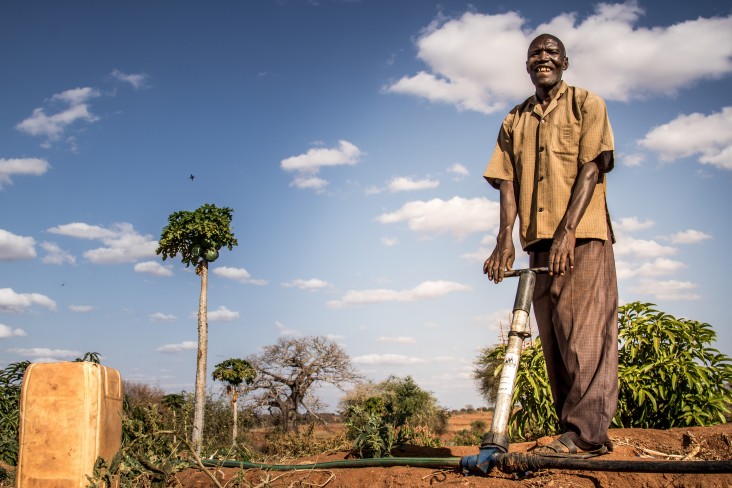Speeches Shim

OVERVIEW
Agriculture is the engine of economic growth in Kenya. About 75% of Kenyans earn all or part of their income from this sector. Agriculture accounts for 33% of the nation's gross domestic product (GDP). Despite continuous population growth, agricultural productivity has stagnated in recent years. Only 20% of Kenyan land is suitable for farming and that land is not utilized efficiently. Recurrent crises such as drought add to agricultural challenges. In response to these challenges, USAID is increasing productivity for smallholder farmers.
PROGRAM AREAS
Increasing food security
As part of the Feed the Future initiative, USAID supported more than 1.5 million households. The initiative brings partners together to address the root causes of hunger and poverty. The initiative shares modern farming practices. We focus on four main value chains: dairy, livestock, horticulture, and staple foods. We also link farmers to markets, improve seed quality, increase access to financing, and promote private sector solutions. The goal is to facilitate more efficient business practices and policies to support Kenya's growing economy.
Building resilience of vulnerable communities
The Horn of Africa crisis in 2011 led USAID to design new programs to prepare for future natural disasters. These programs reduce the need for recurrent humanitarian assistance by accelerating economic growth. Our programs focus on regions in Kenya where livestock is central to the economy and rainfall is increasingly sporadic. USAID also helps pastoralists earn more money from their herds; prevent diarrheal diseases through increased access to water, sanitation, and hygiene; and improve the management of drought-prone rangelands. USAID has made progress in strengthening self-reliance among communities in Kenya's arid counties. We work alongside communities to prepare for climate events like droughts and floods. For instance, local communities from five counties created action plans to inform their development. These plans were then used to attract funding.
Improving nutrition and access to clean water
Inadequate nutrition in children under age five stunts their growth and development. We increase access to diverse and quality foods to improve the health of women and children. In 2018, USAID supported 212,000 community-level interventions to increase awareness and skills related to healthy food preparation. Only 60% of Kenyans have access to improved drinking water. Even fewer (29%) have access to improved sanitation. Diarrheal diseases are the third leading cause of death in children under age five. USAID focuses on market-driven approaches to increase access to water and sanitation services. In 2018, over 472,000 Kenyans accessed clean drinking water. In 2018, 388,000 Kenyans accessed improved sanitation facilities for the first time. Further, we supplied 72,228,710 liters of purified drinking water.
Private sector investment
USAID harnesses the private sector and invests in new ideas that improves the productivity and incomes of smallholder farmers. We also expand access to finance for farmers, entrepreneurs, and businesses. In Kenya, we operate an innovative credit facility that works with local financial institutions to free up capital. The facility provides loans to under-served borrowers, such as rural farmers and small and medium-sized businesses. In 2018, the Feed the Future program supported 42,000 small and medium enterprises and farmers. The total loans amounted to $4,395,776 and catalyzed nearly $1 million in new private sector investment.
FACT SHEETS
Overview: Agriculture and Food Security
Partnership for Resilience and Economic Growth (PREG)
Activity Fact Sheets
Improving Smallholder Productivity and Profitability (ISPP)
Kenya Agriculture Regulatory Capacity Building Program (FOODSCAP)
Kenya Crops and Dairy Market Systems (KCDMS)
Kenya Investment Mechanism Program (KIM)
Kenya Livestock Market Systems (LMS)
Kenya Resilient Arid Lands Partnership for Integrated Development (K-RAPID)


Comment
Make a general inquiry or suggest an improvement.